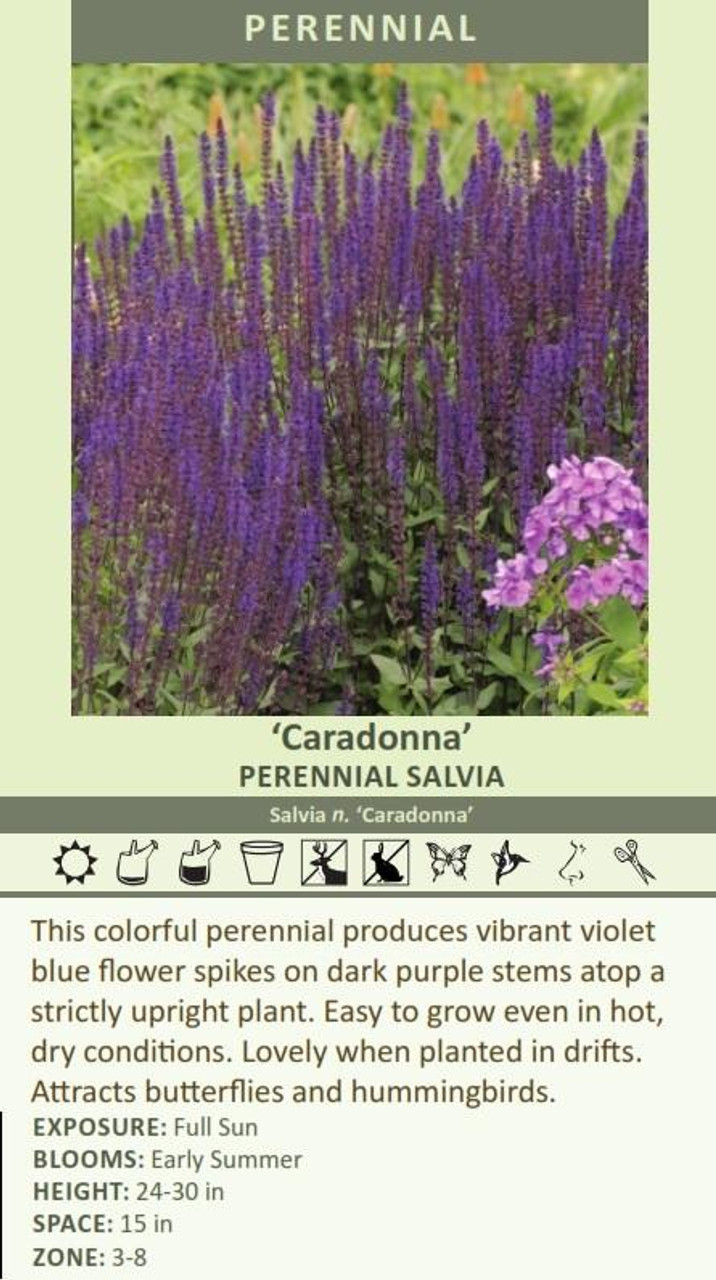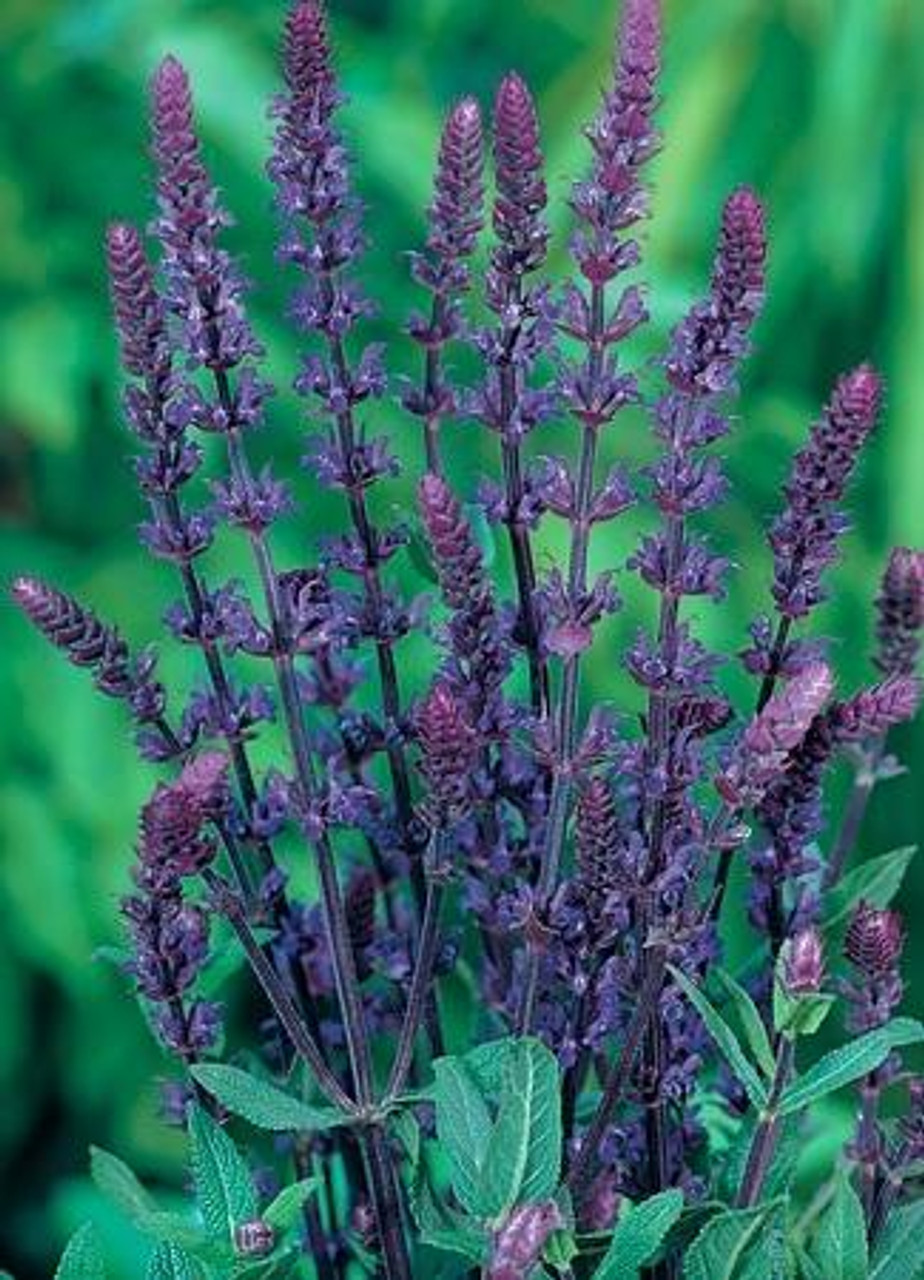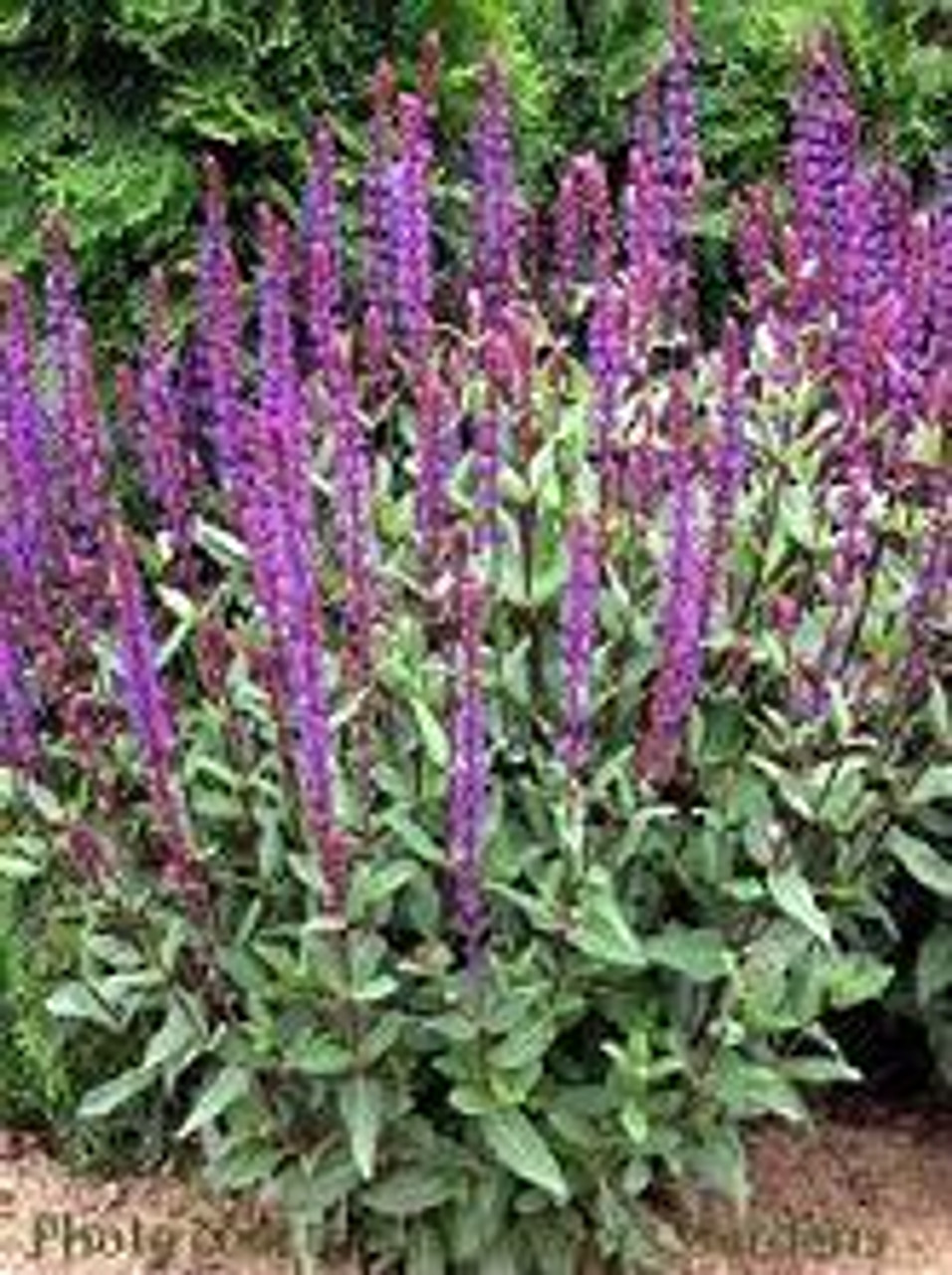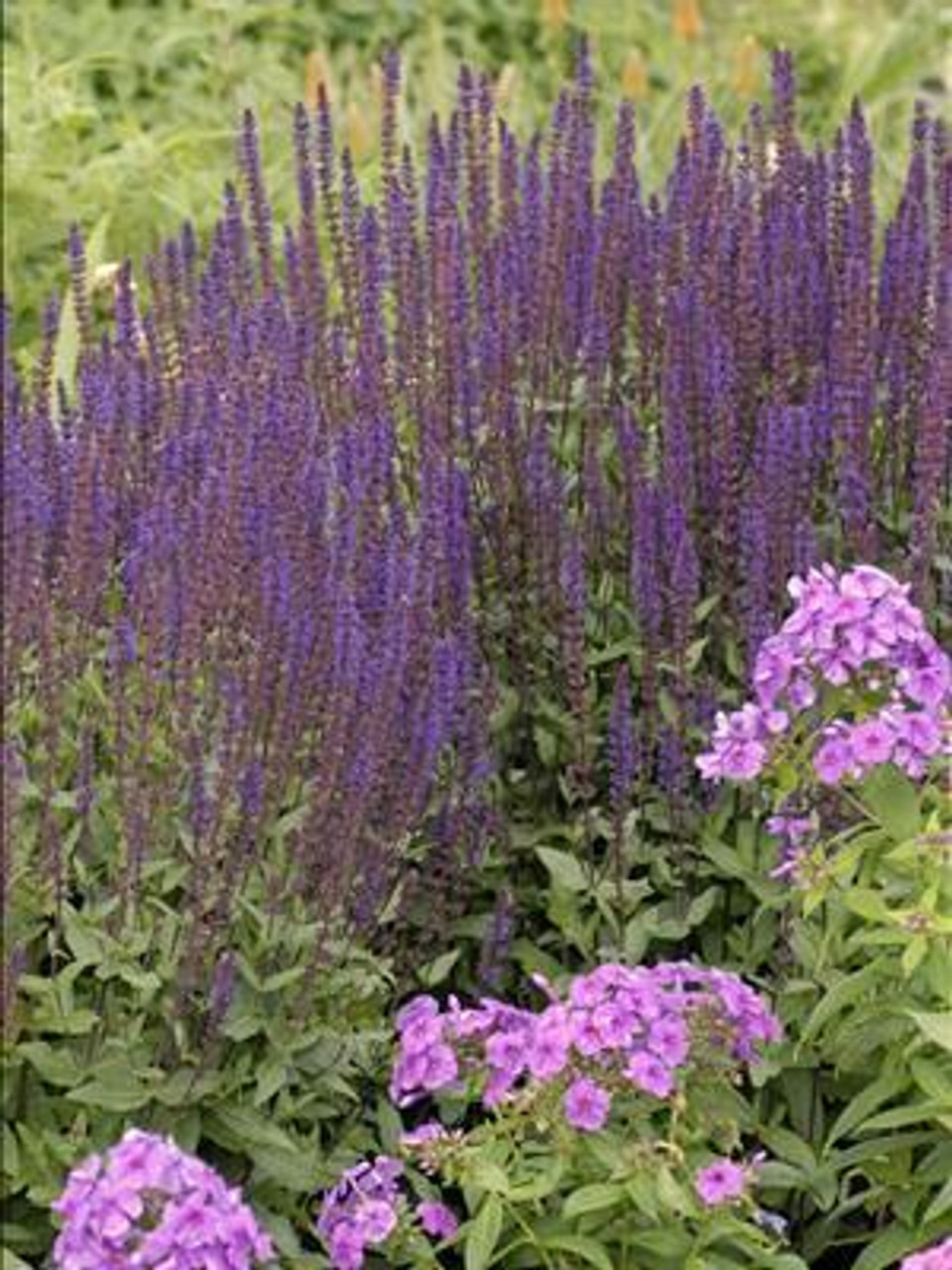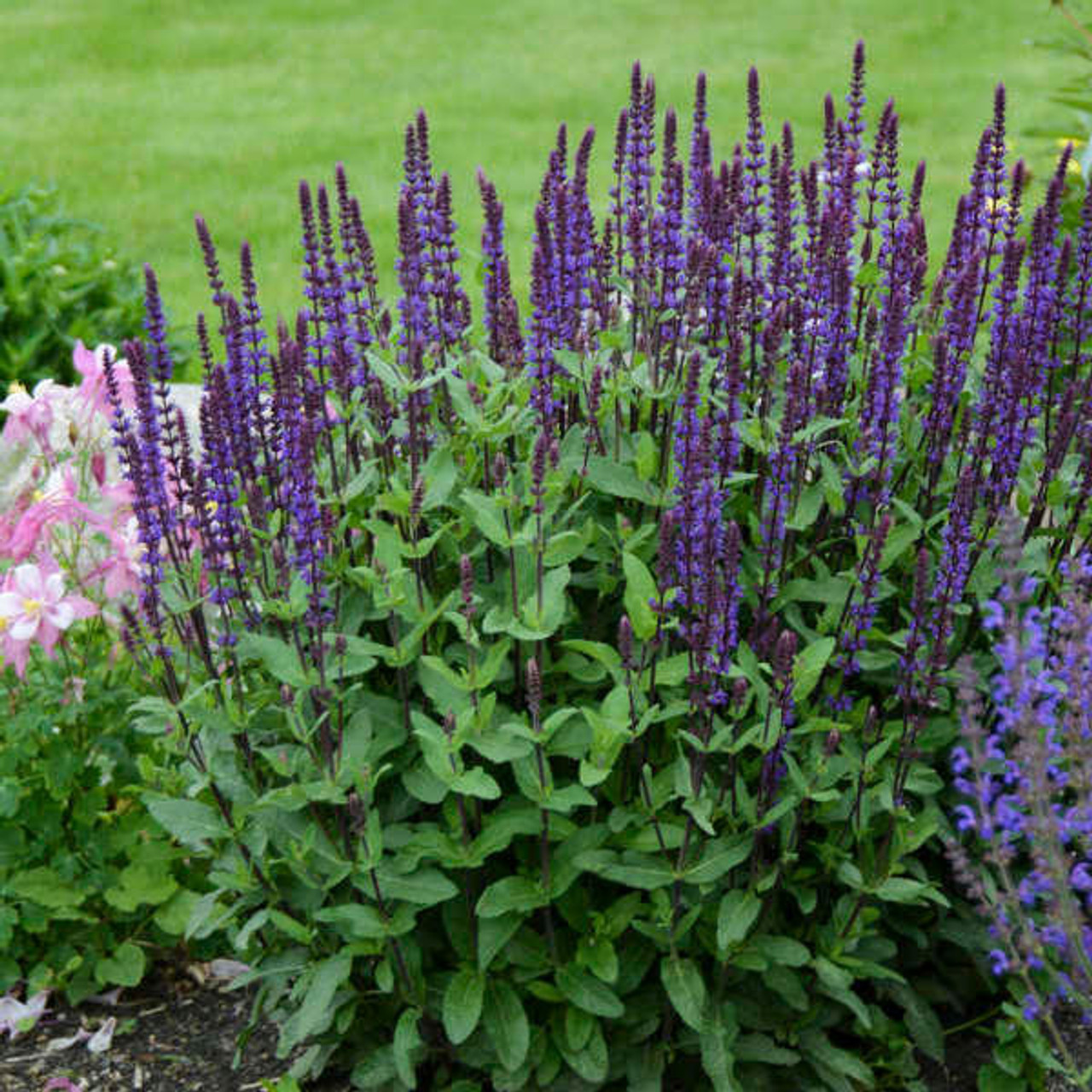Product Description
Salvia nemorosa 'Caradonna' (25) Bare Root Plants
Common Name: Salvia-Perennial, garden sage.
This is a selection from Zillmer Pflanzen in Uchte, Germany. It is similar to 'East Friesland' but with two distinct differences: a rigidly upright habit and dark purple flower stems which accentuate the bright violet-blue flowers. They are great in fresh bouquets. The leaves are aromatic when crushed.
Salvia is easy to grow in almost any climate. Though it is drought tolerant, it will bloom better with regular watering. Deadheading encourages a longer bloom time. If plants get leggy during the season, cut them all the way back to the newly developed foliage. If cut back, plants may rebloom in fall but often the flowers are fewer and smaller.
Royal Horticultural Society's Award of Garden Merit -- 2012
Pennsylvania Horticultural Society Gold Medal Plant -- 2017
Height: 24-30 Inches
Spread: 15 Inches
Hardiness Zones: 3,4,5,6,7,8
Flower Color: Purple-blue shades, Purple-red shades
Foliage Color: Green shades
Full Sun (> 6 hrs. Direct Sun)
Low to Average Water Needs
Average to Fertile Soil Quality
Bloomtime: Early Summer
Attracts Butterflies and Hummingbirds
Bee Friendly
Deer and Rabbit Resistant
Seasonal Interest: Dried Seed Heads
Growth Rate: Medium
Border Plant, Container, Cut Flower, Cut Foliage, Dried Flower, Easy To Grow, Edging, Fragrant Flowers, Fragrant, Foliage, Mass Planting, Salt Tolerant
Salvia nemorosa 'Caradonna' is a standout perennial prized for its striking dark purple stems and vibrant violet-blue flowers. It is a popular choice for adding a touch of drama and long-lasting color to gardens. Here is a closer look at this exceptional plant:
Appearance:
- Flowers: 'Caradonna' produces dense, upright spikes of rich violet-blue flowers that rise above the foliage. The blooms are abundant and long-lasting, providing a stunning display from late spring to early fall.
- Foliage: The plant features aromatic, gray-green leaves that form a compact, mounded shape. The leaves are lance-shaped and have a slightly wrinkled texture.
- Stems: One of the most distinctive features of 'Caradonna' is its dark purple to almost black stems, which provide a striking contrast to the bright flowers and green foliage.
Growing Conditions:
- Hardiness Zones: 'Caradonna' is hardy in USDA zones 4-8, making it adaptable to a wide range of climates.
- Sunlight: It thrives in full sun, needing at least 6 hours of direct sunlight per day. It can tolerate some light shade, but flowering may be reduced.
- Soil: It grows best in well-drained soil. It is tolerant of various soil types, including sandy and clay soils, as long as the drainage is good.
- Water: Once established, it is relatively drought-tolerant, but it benefits from regular watering, especially during dry spells.
Care:
- Deadheading: Removing spent flower spikes (deadheading) encourages continuous blooming throughout the season.
- Pruning: In late winter or early spring, you can cut back the plant to ground level to promote bushier growth.
- Fertilizing: Applying a balanced fertilizer in spring can help support healthy growth and abundant flowering.
- Mulching: Mulching around the plant can help retain moisture, suppress weeds, and protect the plant during harsh winters.
Benefits:
- Vibrant color: The dark purple stems and violet-blue flowers add a bold splash of color to the garden.
- Long bloom time: It blooms for an extended period, typically from late spring to early fall.
- Attracts pollinators: The flowers are attractive to butterflies, bees, and other beneficial insects.
- Deer resistant: It is generally deer resistant, making it a good option for gardens where deer are a problem.
- Low maintenance: Once established, it is a relatively low-maintenance plant.
Uses:
- Borders: It adds vibrant color and vertical interest to garden borders.
- Cottage gardens: Its charming flowers blend well with the informal style of cottage gardens.
- Butterfly gardens: It is a great addition to butterfly gardens, providing a nectar source for butterflies and other pollinators.
- Cut flower gardens: The long-lasting flowers make excellent cut flowers for bouquets and arrangements.
Companion Plants:
- Yarrow (Achillea): The contrasting colors and textures of yarrow and Salvia create a visually appealing combination.
- Daylilies (Hemerocallis): Daylilies offer a variety of colors and bloom times that complement Salvia.
- Coneflowers (Echinacea): Coneflowers, with their vibrant colors and long bloom times, pair well with Salvia.
- Ornamental grasses: Ornamental grasses add movement and texture to the garden while complementing the upright form of Salvia.
Overall, Salvia nemorosa 'Caradonna' is a fantastic choice for adding a touch of vibrant color and drama to your garden. Its long bloom time, ability to attract pollinators, and low-maintenance nature make it a valuable addition to any landscape.
Other Details
The most important part of the plant is its root system. Healthy roots are the foundation of a healthy, vibrant plant. The type of plug container used is based on the specific needs of the plants. Perennials offered as bare root traditionally perform better when planted as bare root.Planted in a specialized mix, potted plants have well established root systems. Top growth stage will vary depending on the current life cycle and time of year when shipped. In Winter and early Spring dormant plants may be shipped. Dormant plants may be planted right away, even before the last frost date.
Most bare root varieties are field grown for at least one season, though Hemerocallis and Hosta are grown for two seasons. The bulk of the soil is removed during the harvesting process and the tops of most varieties are trimmed back to the crown. They are graded, packed in shredded aspen or sphagnum moss and stored in freezers until ready to be shipped.
See our Container Sizes and Bare Root Perennials pages for more information.
Plant information and care is provided in the Overview section, Plant Genus Page and general information is provided in the Planting Care & Guides. Additional questions can be asked on each Plant page.
Plant Spacing: Using the maximum mature spread or width of a plant to guide spacing, ensures space to grow to full size. To fill an area sooner, plant them closer together. Just remember, future thinning or transplanting may be needed.
Water: Keep a close eye on newly planted perennials, especially throughout the first growing year. Most early plant loss is due to too much or too little water!

